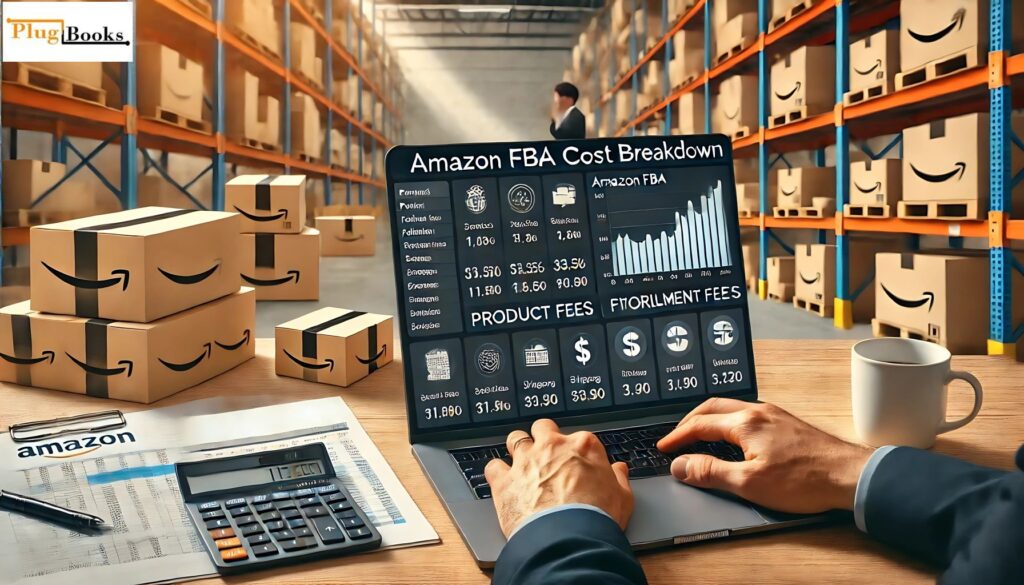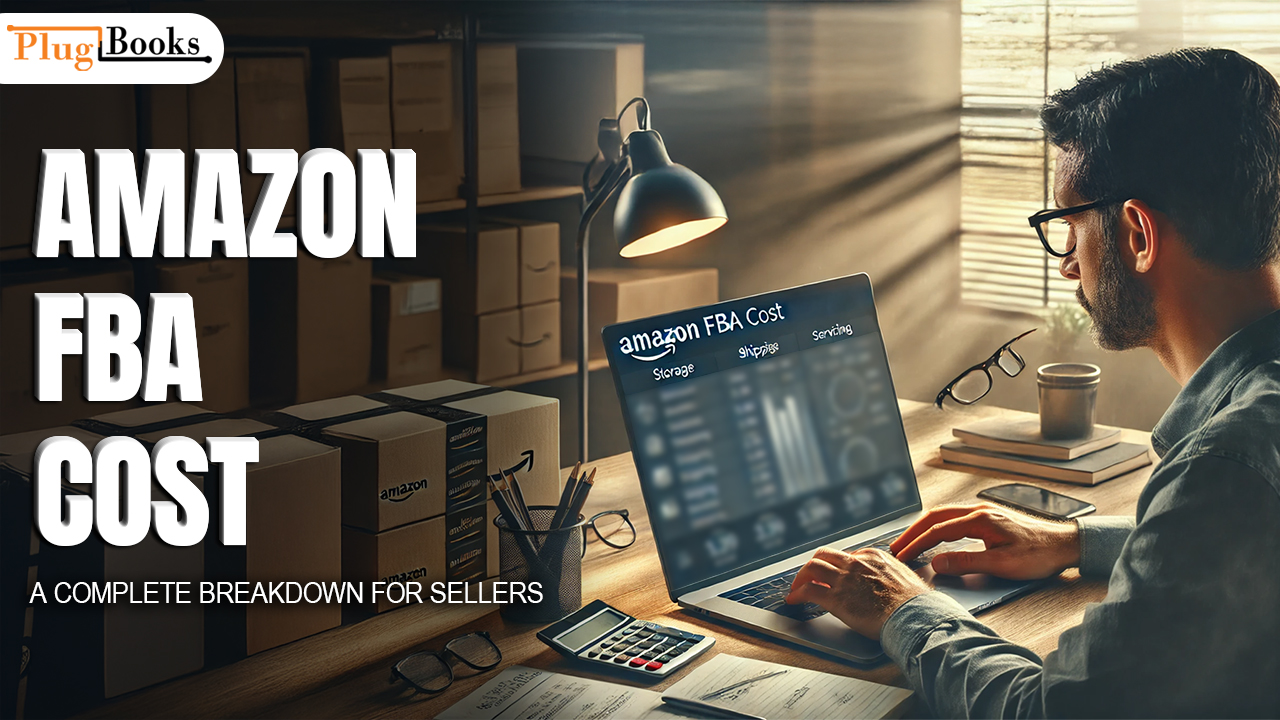Profitability of an eCommerce company depends on knowing the cost of using Amazon FBA either starting or scaling it. Although Amazon FBA (Fulfillment by Amazon) handles storage, packing, and shipping, it comes with several expenses that must be properly controlled and presents enormous benefits. This tutorial will walk you through the key Amazon FBA Cost and how to reduce them so you may maximize your income.
Key Highlights
- Learn about the key expenses like fulfillment, storage, and shipping to Amazon FBA.
- Discover how this tool helps you estimate expenses and maximize your profit margins.
- Understand how much it costs to ship products to Amazon’s fulfillment centers.
- Tips for optimizing your Amazon FBA fees for better profitability.
What is Amazon FBA cost, and why does it affect your expenses?
Amazon FBA costs are those paid to Amazon for product storage, selection, packaging, and delivery. Product size, weight, and seasonality of the service all affect these fees. The Amazon FBA cost calculator can help you to precisely project your costs and guide your decisions on product price.
Breaking Down Amazon FBA Costs
Maximizing profitability requires a grasp of Amazon FBA costs. These expenses are split up into fulfillment fees, storage fees, and Amazon FBA delivery costs. Here is a close-up view:
1. Fulfilment Fees
These costs pay for Amazon’s processing of your goods—including shipping, packaging, and selecting. The weight and size of your product will determine your fulfillment fee.
- Products with a standard size: These fulfill less in cost.
- Oversized goods: additional space and handling needs call for higher fulfillment fees.
2. Storage Charges
The space your merchandise occupies in Amazon’s warehouses determines storage prices.
Fees change all year long; prices are higher in busy times like Q4.
- Monthly storage fees: Monthly storage charges change with the season.
- Long-term storage fees: Long-term storage fees: You will be liable for expenses should your goods remain in the warehouse for more than 365 days.
3. Shipping to FBA Amazon Shipping
Your goods to Amazon’s fulfillment facilities come with costs. These expenses rely on things like weight, size, and transportation mode.
- Partnered carriers: Amazon provides lower rates for sellers using often more reasonably priced affiliated carriers.
- Non-partnered carriers: Though they are more flexible, non-partnered carriers come with extra expenses.
The Amazon FBA cost calculator lets you project Amazon shipping costs so you may allocate your logistics correctly.
Amazon FBA Cost Calculator: How to Project Your Spending
Essential tool for sellers is the Amazon FBA cost calculator. It lets you enter product specifics, including weight, size, and selling price, to get a breakdown of the shipping, storage, and fulfillment expenses. This tool lets you analyze how much Amazon FBA costs vs. other fulfillment techniques and improve pricing selections.
How Much Does Amazon FBA Cost for New Sellers?
“How much does Amazon FBA cost?” ask new sellers depending on numerous elements:
- Product size and weight
- Times of shipping and storage
- Individual or professional seller plan
Professional sellers pay a monthly subscription fee; individual sellers pay per item. Estimate your fees using the Amazon FBA cost calculator to be sure your product pricing covers all charges.
Understanding and Reducing Shipping to Amazon FBA Cost
Product size, weight, shipment method, and distance all affect the shipping to Amazon FBA cost—expenses for delivering goods to Amazon’s fulfillment centers.
1. Factors Affecting Shipping Fees:
- Product Size and Weight: Larger, heavier products are more expensive to send.
- Carrier Choice: While non-partnered carriers give flexibility but at more expense, partnered carriers offer cheaper rates.
- Shipping Distance: The shipping cost increases with increasing distance.
- Volume of Shipment: Bulk shipments offer less per unit cost.
2. Minimizing Shipping Costs:
- Using Amazon’s affiliated carriers will help you to save shipping costs.
- Packaging should be optimized to lower weight and dimension.
- Consolidate orders to cut the total count of shipments.

Is Amazon FBA worth the outlay?
Amazon FBA has many advantages despite the expenses:
- Prime eligibility: Products satisfied by Amazon qualify for Prime, thereby boosting visibility and sales.
- Hassle-free shipping and customer service Amazon saves time by handling shipping, refunds, and customer service—that is, hassle-free delivery.
- Scalability: You can expand your company free from logistical management.
Although Amazon FBA expenses are important, for companies trying to grow specifically, the advantages usually exceed their expenses.
How Plugbooks.io Can Help Manage Your Amazon FBA Costs
Plugbooks.io may be a great solution for simplifying your company processes so that you may properly control the several Amazon FBA expenses described in this blog. It lets you keep on top of your profit margins by automating inventory management, tracking your spending, and streamlining your financial reporting.
Plugbook guarantees that your Amazon sales data is immediately synced by effortlessly connecting with QuickBooks, therefore facilitating management of your accounting and guaranteeing accurate and current finances. This connection helps you to save time and lowers mistakes, therefore freeing you to concentrate on effectively expanding your company.

In conclusion,
Maximizing your price approach depends on knowing Amazon FBA cost. You can boost profitability by including fulfillment fees, storage costs, and Amazon FBA costs in factoring. The Amazon FBA cost calculator, among other tools, lets you project costs and decide whether FBA is the best option for your company.



